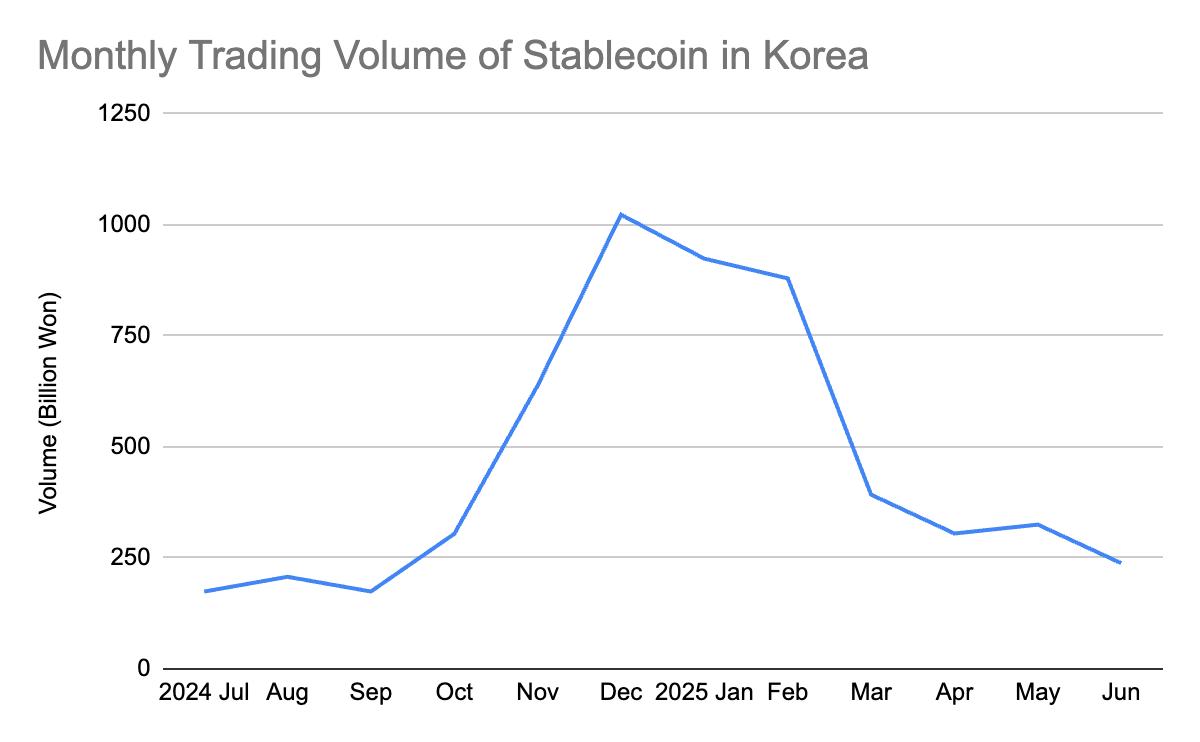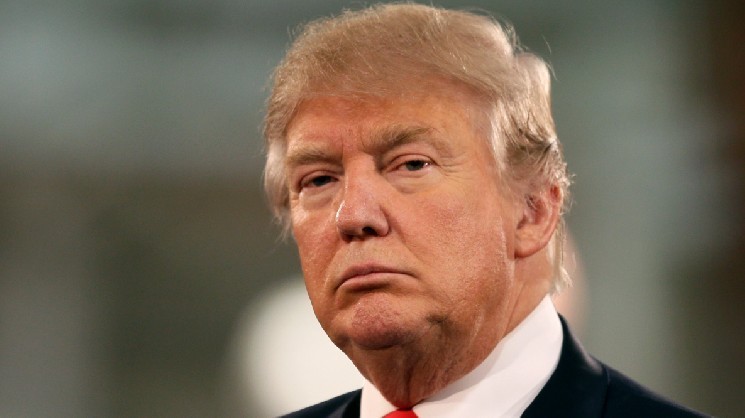The South Korean cryptocurrency market, known for its focus on retail investor spot trading, is experiencing a significant slowdown.
The country’s daily stablecoin volume surpassed ₩1 trillion ($730 million) late last year. It has since fallen to around ₩200 billion ($146 million) in June—an 80% drop in just six months.
Why is volume down?
According to data sent to People Power Party lawmaker Park Sung-hoon, the Medium daily domestic stablecoin volume was 238 billion won in June. The National Assembly Research Service provided this data .
This figure aggregates the volume of US dollar Peg stablecoins such as USDT, USDC, and USDS. The data comes from five major South Korean cryptocurrency exchanges: Upbit, Bithumb, Korbit, Coinone, and Gopax.
 Source: Data from South Korean lawmaker Park Sung-hoon of the People Power Party
Source: Data from South Korean lawmaker Park Sung-hoon of the People Power PartyDomestic stablecoin volume has steadily increased from 174.1 billion won in July last year to 304.1 billion won in October and 638.1 billion won in November. It then skyrocketed to 1.02 trillion won in December.
However, this trend has reversed sharply this year. Volume fell to 923.8 billion won in January, 879.4 billion won in February, and then dropped to around 300 billion won from March to May before hitting 200 billion won in June.
A stark contrast to the global market
Stablecoins are designed to maintain a stable value Peg to a fiat currency such as the US dollar. They thus Vai as a means of payment and exchange in the cryptocurrency market.
Therefore, the decline in stablecoin volume can be understood as a contraction of overall investment, while also signaling a decline in trading activity.
Unlike global markets, South Korea's limited use of stablecoins is believed to be the reason for the decline in volume . Globally, stablecoins are increasingly used to invest in crypto Derivative such as perpetual Futures Contract and make real-world payments.
As a result, the global stablecoin market Capital and volume have grown rapidly this year. However, crypto Derivative trading is banned in South Korea .
Furthermore, credit card payments dominate the market, accounting for nearly 70% of all payment transactions, leaving stablecoin-based payments as a small part of the economy.
Cryptocurrency holdings and volume also decreased
South Korea's overall cryptocurrency volume and domestic cryptocurrency holdings have declined during this period. According to the Financial Stability Report released by the Bank of Korea last month, the Medium daily cryptocurrency volume in the country was 3.2 trillion won in June.
This is an 80% decrease from 17.1 trillion won in December last year. Domestic cryptocurrency holdings also fell from 121.8 trillion won at the end of January to 89.2 trillion won in June.
The Bank of Korea said the growth of domestic stablecoins has recently slowed down due to the stagnation of the virtual asset market.
The report also suggests that the “Trump effect”—expectations of pro-crypto policies—was strong at the start of the year but appears to have largely faded.







